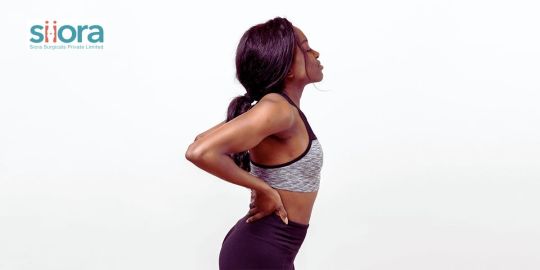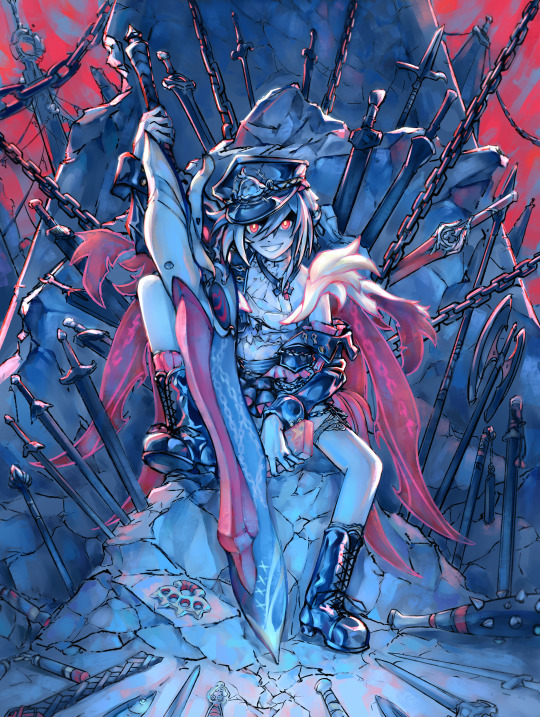#lordosis
Explore tagged Tumblr posts
Text
happy disability pride to all of my fucked up spine havers
happy disability pride to those of us who have spinal cord injuries, degenerative disc disease, ankylosing spondylitis, scoliosis, kyphosis, lordosis, spinal arthritis, cauda equina syndrome, tethered cord syndrome, spinal fusions, stenosis, myelopathy, radiculopathy, spondylolithesis, craniocervical instability, spina bifida, spinal tumors, syringomyelia, and anything else spine related
we are so very cool and i love you all so much
#disability pride month#disabled pride#disability pride#disabled pride month#cripplepunk#cripple punk#cpunk#actually disabled#physically disabled#disabled#disability#physical disability#spinal cord injury#SCI#degenerative disc disease#ankylosing spondylitis#scoliosis#kyphosis#lordosis#cauda equina syndrome#spinal fusion#stenosis#myelopathy#radiculopathy#spondylolisthesis#CCI#spina bifida#spinal tumor#syringomyelia
6K notes
·
View notes
Text

this is my firstw time posting art hello!! uhh the last episode made me like digital circus.
#zooble#the amazing digital circus#tadc#tadc fanart#fanart#art#sketches#doodle#sketch dump#ms paint#tadc zooble#lordosis
131 notes
·
View notes
Text
shoutout to people with spine curvature conditions - especially ones that are quite noticeable, or ones that require supportive wear. you don't look like a monster. you don't look like a freak. you don't look foolish. you don't need to hide your body, or feel ashamed.
you and your body are just as worthy of compassion as everyone else. you're beautiful, and you and your body are doing their best. you are seen, heard, and loved. it's okay.
#softspoonie#disability#disabled#anti ableism#body posi#body positivity#physically disabled#scoliosis#lordosis#kyphosis#neck pain#back pain#chronic pain#visibly disabled#disability aids#mobility aid user#mobility aids#disability positivity#disabled positivity#positivity#cripple
1K notes
·
View notes
Text
hey anyone else doesnt want to work towards getting better
idk if thats the right wording but im sick of constantly striving towards being able bodied when i know i wont be no matter what i do . i just want accommodations and to not get any worse . im tired . let me be as i am .
#actually disabled#disability#physically disabled#disability pride#disabled#cripple punk#cripplepunk#physical disability#limb length discrepancy#leg length discrepancy#scoliosis#lordosis#suggested tags on tumblr r very helpful#idk what theyre called#rlly
149 notes
·
View notes
Text
my dad was watching something on scifi where engineers were talking about 'a steel skeleton that could hold hundred of tons with just x amount of rods'
and my dumb ass went "well my steel skeleton only needs two rods"
and my dad goes, "to carry 20lbs or less?"
#spinal fusion#titanium spine things 😍#personal#my post#scoliosis#kyphosis#lordosis#cyborg#chronic illness
15 notes
·
View notes
Text
Nothing like realizing one of these original projects that you're making could be released after the fact you're dead
And if you're worried about it being self-inflicted no I just have a condition called Elher's danlos syndrome and it's deteriorating a lot quicker than we had hoped in 10 years time I don't honestly know if I will be around to even see the chaos that happens with one of my works
This is why I hope to get a lot of my stories completed and why I work so hard while I can
I may need carpal tunnel surgery soon so if I do go on a two-week Hiatus that's why I have been having more pain in my right hand
The biggest issue I'm running into is my neck I wake up with days that I am heavily disassociated and not feeling myself at all they may have to do a Fusion of my neck which would take several months of recovery and would forever change my life.
But I do hope you know my mutuals and followers that I am grateful for all of your support extremely grateful as a disabled creator who doesn't know when the last chapter may be written and who doesn't even know if she will be able to complete her work it is a scary thought for me to leave the chapter half done
But while I can, I'm happy for the joy that I can bring and the stories I can tell.
2 notes
·
View notes
Text

🧐 How to Identify Lordosis 🦴
Lordosis is an excessive inward curve of the spine, commonly in the lower back. Here's how to spot it:
Exaggerated Lower Back Curve – The lower back may arch more than normal, giving a "swayback" look. Pain or Discomfort – You might feel pain or tightness in the lower back or neck. Poor Posture – Standing straight may be harder, or you might notice a leaning posture. Visible Bulging Stomach or Buttocks – The curve can push the abdomen and hips forward. If you’re noticing these signs, consider seeing a healthcare professional for advice on managing lordosis. VENKAT PADMA ORTHO CLINIC Address: VISAKAPATNAM Contact us: 7799607409, 7010420956
0 notes
Text
realising that it’s probably not ideal to only have a couple of cms in space between my pelvis and ribs



I hate having a physical form
#hEDS#they’re almost touching ???#i think i can make them touch if i lean/bend sideways ???#scoliosis#lordosis#kyphosis
1 note
·
View note
Text

People with lordosis give me tips on self-love lol
1 note
·
View note
Text
it's incredibly easy to hug me around the waist, shoutouts to lordosis for making this possible
1 note
·
View note
Text
Then there’s me being like: why am I still feeling something in my spine, I’m laying down you fussy shit, I am by definition DOING NOTHING
My Spine: hahaha, fuck you!
i love going to bed it’s like a factory reset
270 notes
·
View notes
Text
What is Lordosis? What Should You Know?

Our spine has natural curves in the neck, upper back, and lower back that give the ‘S’ shape to our spine. It is important for everyone to have these curves as they play an important role in supporting the head weight, absorbing shock, and maintaining the flexibility & structure of the spine. Now, when the curves in the neck region or lower back become high, the condition is called lordosis. In this post, we will talk about the condition in detail.
0 notes
Text
i love this detail— even with his gloves on he’s still got his hands in his pockets 😭 some things never change 🥲



#brb adding this detail to all future teen skk fics#also re: the 3rd panel… new hc just dropped: Chuuya with lordosis :’)#stormbringer Chuuya the boy that you are…#i’m in so much pain. i’m not making it outta this manga alive y’all#bsd#bungou stray dogs#bsd chuuya#nakahara chuuya#bsd stormbringer#bsd stormbringer manga#stormbringer manga#stormbringer spoilers#bsd spoilers
233 notes
·
View notes
Text

weapon
#honkai impact#herrscher of sentience#couldn't bring myself to draw the high heels of this skin#she must already have bad back pain with that average honkai valk lordosis#nggh initially wanted to finish this for halloween then got hit with mental worms
504 notes
·
View notes
Note
Feed rhe duncney community please

I offer-
#Bittany!#ft Courtney's Lordosis#total drama#art#total drama fanart#total drama art#duncney#duncan x courtney#duncan total drama#total drama duncan#duncan td#td duncan#total drama courtney#courtney td#courtney total drama#td courtney#ty for the ask <3
75 notes
·
View notes
Text

kirks curves
179 notes
·
View notes